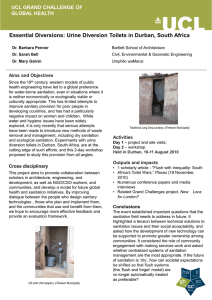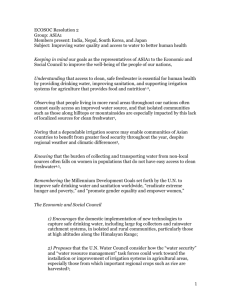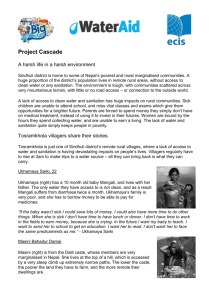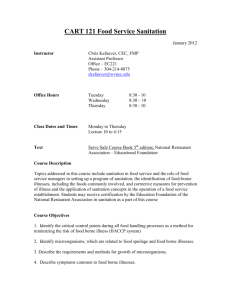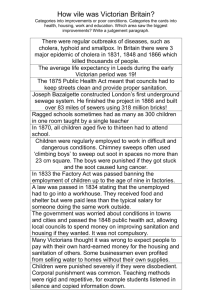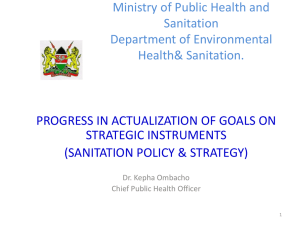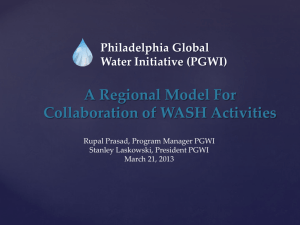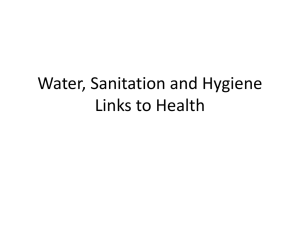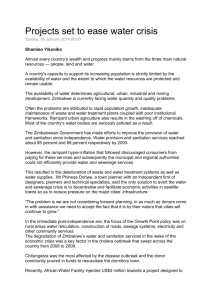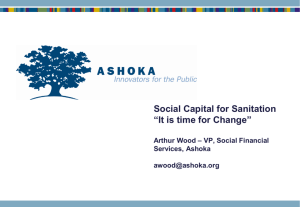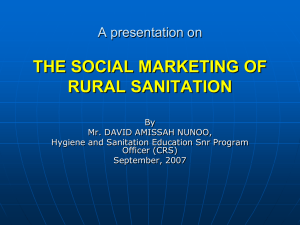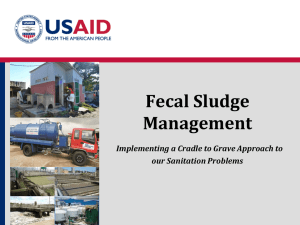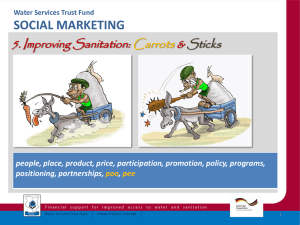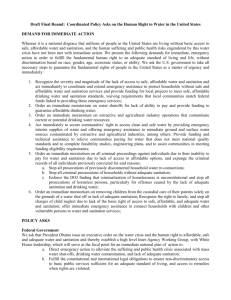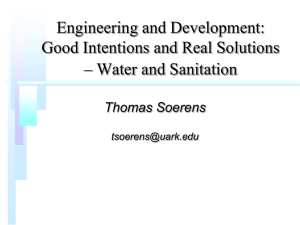Antitar Water Supply and Sanitation Project, Nepal
advertisement
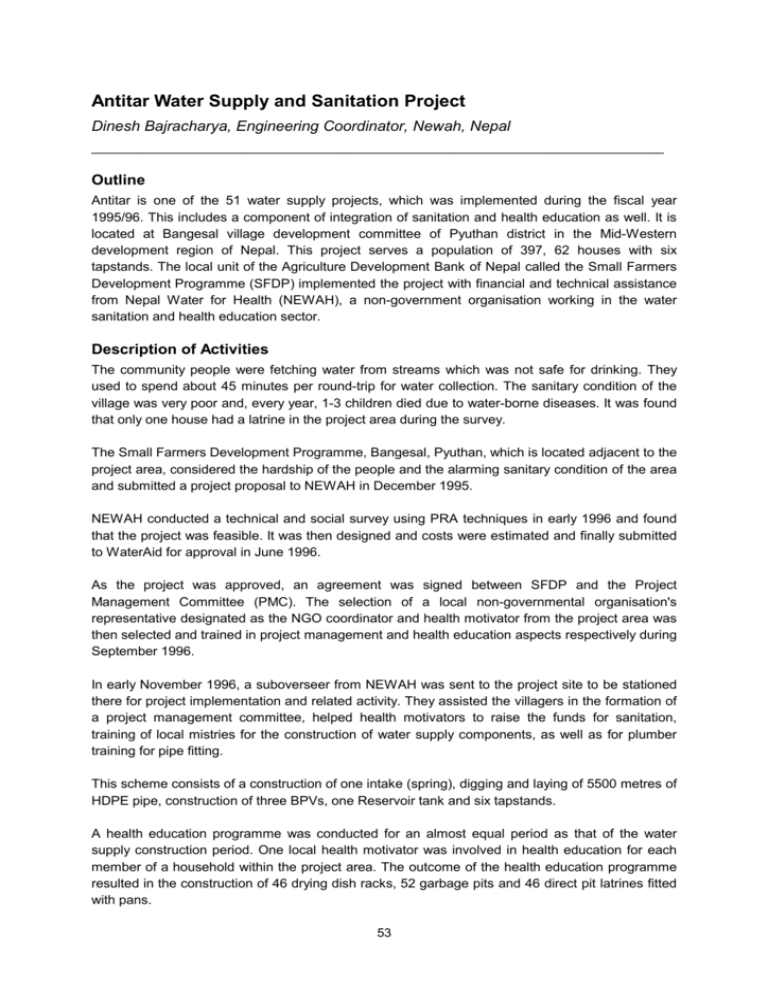
Antitar Water Supply and Sanitation Project Dinesh Bajracharya, Engineering Coordinator, Newah, Nepal _____________________________________________________________________________ Outline Antitar is one of the 51 water supply projects, which was implemented during the fiscal year 1995/96. This includes a component of integration of sanitation and health education as well. It is located at Bangesal village development committee of Pyuthan district in the Mid-Western development region of Nepal. This project serves a population of 397, 62 houses with six tapstands. The local unit of the Agriculture Development Bank of Nepal called the Small Farmers Development Programme (SFDP) implemented the project with financial and technical assistance from Nepal Water for Health (NEWAH), a non-government organisation working in the water sanitation and health education sector. Description of Activities The community people were fetching water from streams which was not safe for drinking. They used to spend about 45 minutes per round-trip for water collection. The sanitary condition of the village was very poor and, every year, 1-3 children died due to water-borne diseases. It was found that only one house had a latrine in the project area during the survey. The Small Farmers Development Programme, Bangesal, Pyuthan, which is located adjacent to the project area, considered the hardship of the people and the alarming sanitary condition of the area and submitted a project proposal to NEWAH in December 1995. NEWAH conducted a technical and social survey using PRA techniques in early 1996 and found that the project was feasible. It was then designed and costs were estimated and finally submitted to WaterAid for approval in June 1996. As the project was approved, an agreement was signed between SFDP and the Project Management Committee (PMC). The selection of a local non-governmental organisation's representative designated as the NGO coordinator and health motivator from the project area was then selected and trained in project management and health education aspects respectively during September 1996. In early November 1996, a suboverseer from NEWAH was sent to the project site to be stationed there for project implementation and related activity. They assisted the villagers in the formation of a project management committee, helped health motivators to raise the funds for sanitation, training of local mistries for the construction of water supply components, as well as for plumber training for pipe fitting. This scheme consists of a construction of one intake (spring), digging and laying of 5500 metres of HDPE pipe, construction of three BPVs, one Reservoir tank and six tapstands. A health education programme was conducted for an almost equal period as that of the water supply construction period. One local health motivator was involved in health education for each member of a household within the project area. The outcome of the health education programme resulted in the construction of 46 drying dish racks, 52 garbage pits and 46 direct pit latrines fitted with pans. 53 Lessons learned NEWAH has learnt many lessons from the community, partner and project during the survey, implementation and evaluation of the project. Some of them are as follows: • A project will be successful in a community where real need is felt by that community. • Small projects are better than large projects for success. • Similar types of cast (no big hierarchy within the cast) in a community like Chtry, Magar, Kami is conducive in creating a better understanding. • Unity within the community is a most effective tool for success. • Positive attitude of partner towards the project will have a large effect. • Out school programme was very effective for the health and sanitation programme. • Video show programme is an effective tool for the motivation in a health and sanitation programme. • Availability of local materials e.g. sand, stone, wood etc. made the project cost-effective. • Clustered village is an added advantage for the project to be successful. • Project site visit from Senior Management Team (SMT) Members (Section Heads in NEWAH Headquarters) encouraged the community people to work better for their own recognition. • Women participation was a very encouraging tool for the success of the project. • Flexible policies and procedures helped the community to explore their own ideas, which created avenues for innovation. Besides the certain rules and regulations, there should be some flexibility where the community people can decide for themselves about the project. 54


